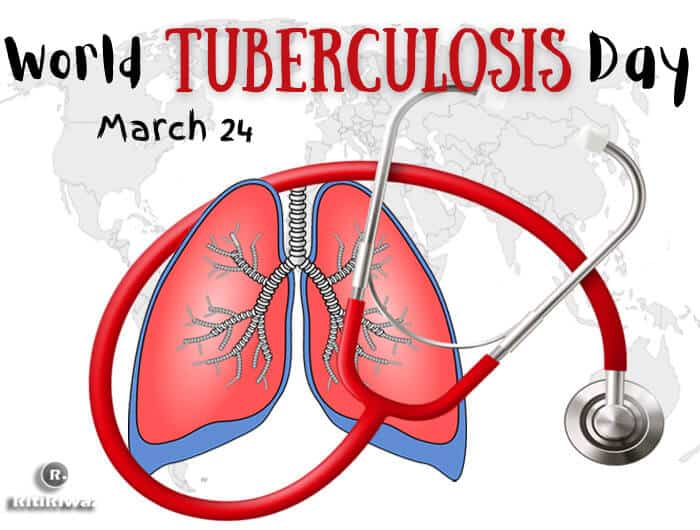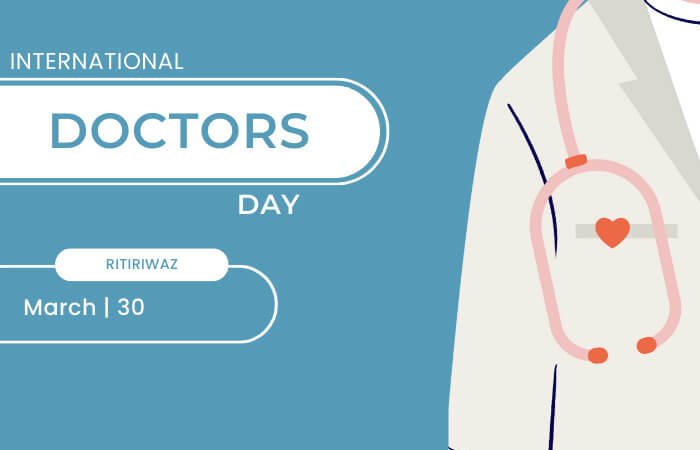World Tuberculosis Day – March 24th

United Nations’ World Tuberculosis Day is observed on March 24th, aimed at raising awareness of a disease that kills an estimated 1.8 million people every year. Six countries account for nearly two-thirds of the cases: India, Indonesia, China, Nigeria, Pakistan, and South Africa. Tuberculosis is an ancient disease that never went away – today it remains the world’s deadliest infectious killer.
Tuberculosis is curable and preventable and this day is dedicated to increasing awareness of the disease and the efforts to end it. The date commemorates the day on March 24th, 1882 when German scientist Dr. Robert Koch announced that he had discovered the cause of the disease, the TB bacillus. His discovery allowed the scientific community to begin diagnosing and curing TB.
100 years later, in 1982, the World Health Organization (WHO) and the International Union Against Tuberculosis and Lung Disease sponsored the first World Tuberculosis Day. It remains the most deadly infectious disease in the world.
The Theme of World Tuberculosis Day 2025 is ‘Yes! We Can End TB: Commit, Invest, Deliver, is a bold call for hope, urgency, and accountability‘. The Theme aims to inspire hope and encourage high-level leadership, increased investments, faster uptake of new WHO recommendations, adoption of innovations, accelerated action, and multisectoral collaboration to combat the TB epidemic.
What is Tuberculosis?
Tuberculosis (TB) is an infectious disease that is caused by a bacterium named Mycobacterium tuberculosis. It most often affects the lungs, but can also cause disease in most parts of the body, especially in people who are young or have a poorly functioning immune system. Children under the age of five are particularly susceptible to becoming ill with severe forms of the disease if exposed.
How is it contracted?
TB is spread when one person who is ill with pulmonary TB disease coughs bacteria into the air. The bacteria are then inhaled into the lungs of another person who becomes infected. Most who are infected do not become ill right away. Only about five to 15 percent of people who become infected with TB become ill in their lifetime. However, the risk of becoming ill can be much higher in people who have HIV, are very young, or have other risk factors such as diabetes. Those who smoke, consume alcohol, have poor nutrition or are taking medications that decrease their immune system also face higher risks.
Treating tuberculosis is challenging because the bacteria that cause it to divide much more slowly than most bacteria, taking around 15-20 hours to do so. As many antibiotics target bacterial cell division, this can make the TB bacteria take much longer to wipe out. In addition, the bacteria have a unique cell wall containing waxes formed from mycolic acids which render many antibiotics ineffective.
The World Health Organization has set an ambitious goal for the global community: to reduce TB deaths by 95 percent between 2015 and 2035 and to cut new cases by 90 percent during the same time period. In order for this to happen new drugs to tackle the disease will be crucial.
Revised National Tuberculosis Control Programme (RNTCP)- RNTCP is a program for prevention and control of TB in-country by the Ministry of Health and Family Welfare, Government of India. It has integrated four strategic pillars of “Detect – Treat – Prevent – Build” (DTPB) under the National Strategic Plan 2017-2025 for moving towards TB elimination by 2025.
“Call to eliminate TB, by 2025 – 5 years in advance of the goals unanimously adopted by the UN General Assembly as part of the Sustainable Development Goals (SDGs)”
World Tuberculosis Day aims to raise awareness of the fact that tuberculosis is still an epidemic in many parts of the world. Landmarks around the world will have a red glow on March 24 in support of World Tuberculosis Day, which draws attention to the threat of TB, a preventable but deadly infectious bacterial disease that harms the lungs.
Suggested Read: Important Days In March






